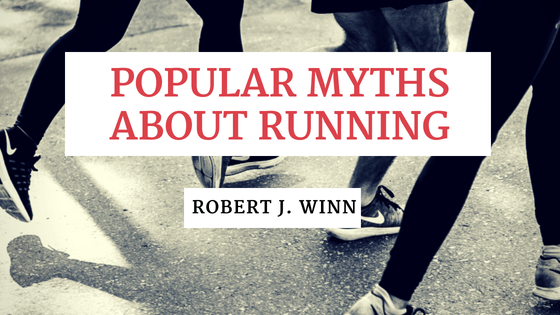Running is bad for you. It wrecks your knees, hurts your joints, and everyone knows that taking a five-mile run only feels good if you’re twenty years old and at your peak performance ability. What’s the point of taking it up? You would be better off crashing on your couch with a bag of reduced-sodium potato chips or watching your nephew’s track meet from the stands. It’s settled and agreed: running is awful.
Or, at least, that’s how it seems when you listen to your coworkers talk about how much they hate their health club’s annual 4K.
Running gets a bad rap. For all its popularity, the sport is plagued by misconceptions and fad-like myths that scare people away from making it a common practice. In this blog, I’ll take a deeper dive into running and separate sport fact from sport fiction.
Running Shoes are Bad
Not all that long ago, the so-called “Barefoot Running Movement” swept through the athletic community, spurred on by Christopher McDougall’s popular book, Born to Run. Born to Run was an anthropologist’s study on the intersection of tribal life, barefoot running, and super athletes; after it was released to a broad audience, it sparked a flash of mainstream interest in minimalist running. The idea behind the fad was that by wearing thin running flats or no shoes at all, runners could run and feel better for longer than those who used traditional running shoes.
It’s since fizzled out; in 2014, several studies presented at the American College of Sports Medicine “found no significant benefits, in terms of economy, from switching to minimalist, barefoot-style footwear. […] other studies have found that wearing minimalist shoes does not toughen foot muscles to make runners more injury resistant, one of the key arguments of the minimalist movement.” Theoretically, you can take your morning run barefoot – but you shouldn’t feel as though you need to.
Only Young People Can Run
The idea that only younger athletes can run is ageist and factually incorrect. In the end, mindset makes more of a difference than years ever could; a driven forty-year-old is more equipped to handle a marathon than a couch-potato twenty-something ever would be. That said, peak ages are milestones to keep in mind. According to research published by Outside Magazine, sprinters usually peak in their early twenties, while the best marathoners tend to crest in their late twenties or early thirties.
Running Wrecks Your Knees
Running does not wreak havoc on your knees! The idea that running can wear away at your cartilage or negatively impact your joints is truly and resoundingly a myth. In fact, recent research from Johns Hopkins indicates that regular runs might actually protect the knees from joint degeneration down the line.
Running Is a Free Pass to Junk Food
No, going for a run twice a week does not give you a free pass to binge on junk food. While it can be tempting to gauge athleticism and food within the context of an equation – one 400 calorie chicken tender meal in exchange for a 400-calorie burner workout at the gym – that sort of distillation just isn’t good for you. Cardiovascular activity can help you fend off heart disease and lose weight, but only if you adopt an equally healthy diet and lifestyle!

